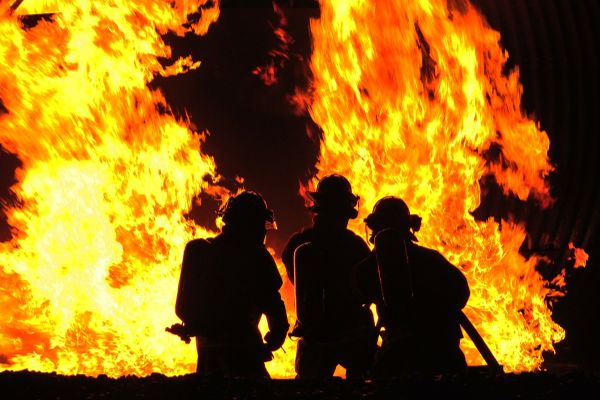Wildfire Smoke

Wildfire smoke can harm you in multiple ways. Smoke can hurt your eyes, irritate your respiratory system, and worsen chronic heart and lung diseases. This fact sheet tells you how you can protect your health and be safe if you are exposed to wildfire smoke.
What is Wildfire Smoke and Can it Make Me Sick?
Wildfire smoke is a mix of gases and fine particles from burning vegetation, building materials, and other materials. Wildfire smoke can make anyone sick. Even someone who is healthy can get sick if there is enough smoke in the air. Breathing in smoke can have immediate health effects, including:
- Coughing
- Trouble breathing normally
- Stinging eyes
- A scratchy throat
- Runny nose
- Irritated sinuses
- Wheezing and shortness of breath
- Chest pain
- Headaches
- An asthma attack
- Tiredness
- Fast heartbeat
Older adults, pregnant women, children, and people with preexisting respiratory and heart conditions may be more likely to get sick if they breathe in wildfire smoke.
Wildfire Smoke Can Affect High Risk Groups
Eight Tips for Protecting Yourself from Breathing Wildfire Smoke
If possible, limit your exposure to smoke. Here are eight tips to help you protect your health:
- Pay attention to local air quality reports and the US Air Quality IndexExternal . When a wildfire occurs in your area, watch for news or health warnings about smoke. Pay attention to public health messages and take extra safety measures such as avoiding spending time outdoors.
- Pay attention to visibility guides if they are available. Although not every community measures the amount of particles in the air, some communities in the western United States have guidelines to help people estimate air quality based on how far they can see.
- If you are told to stay indoors, stay indoors and keep your indoor air as clean as possible. Keep windows and doors closed unless it is very hot outside. Run an air conditioner if you have one, but keep the fresh-air intake closed and the filter clean to prevent outdoor smoke from getting inside. Seek shelter elsewhere if you do not have an air conditioner and it is too warm to stay inside with the windows closed.
- Use an air filter. Use a freestanding indoor air filter with particle removal to help protect people with heart disease, asthma or other respiratory conditions and the elderly and children from the effects of wildfire smoke. Follow the manufacturer’s instructions on filter replacement and where to place the device.
- Do not add to indoor pollution. When smoke levels are high, do not use anything that burns, such as candles and fireplaces. Do not vacuum, because vacuuming stirs up particles already inside your home. Do not smoke tobacco or other products, because smoking puts even more pollution into the air.
- Follow your doctor’s advice about medicines and about your respiratory management plan if you have asthma or another lung disease or cardiovascular disease. Call your doctor if your symptoms worsen.
- Do not rely on dust masks for protection. Paper “comfort” or “dust” masks commonly found at hardware stores trap large particles, such as sawdust. These masks will not protect your lungs from smoke. An “N95” mask, properly worn, will offer some protection. If you decide to keep a mask on hand, see the Respirator Fact Sheet provided by CDC’s National Institute for Occupational Safety and Health.
- Avoid smoke exposure during outdoor recreation. Wildfires and prescribed burns—fires that are set on purpose to manage land—can create smoky conditions. Before you travel to a park or forest, check to see if any wildfires are happening or if any prescribed burns are planned.
